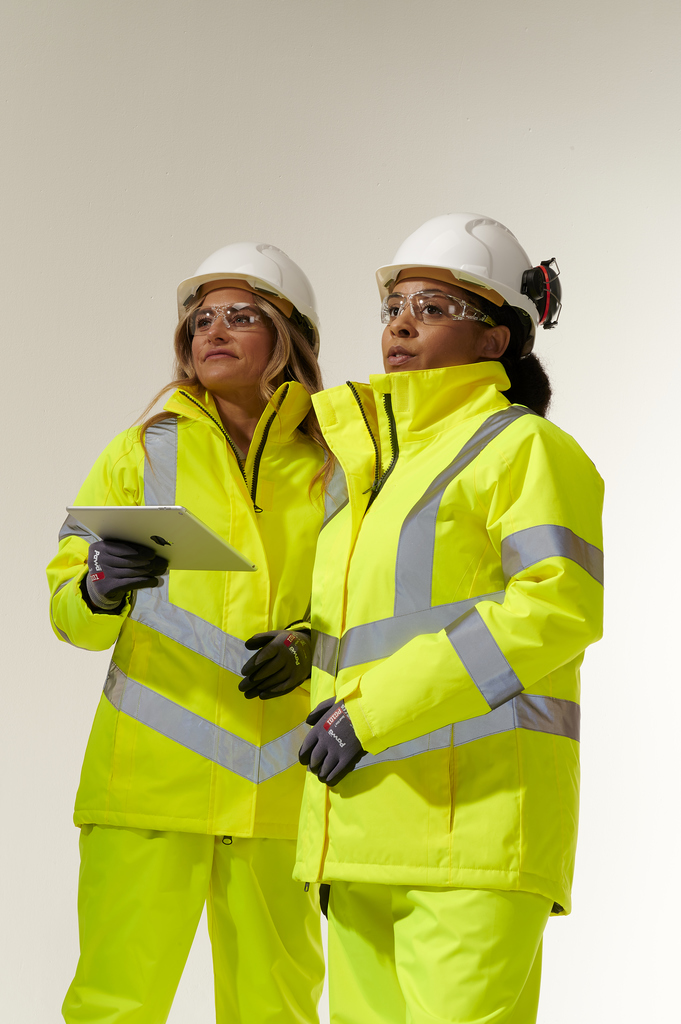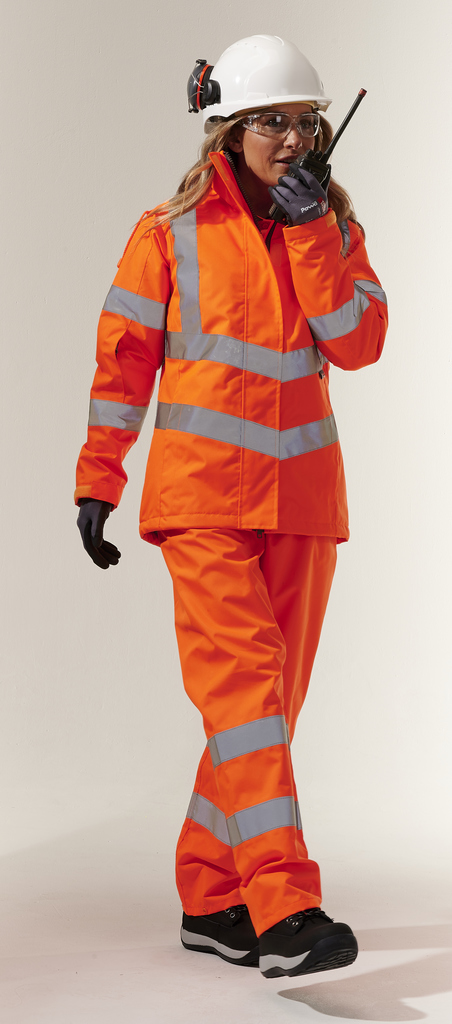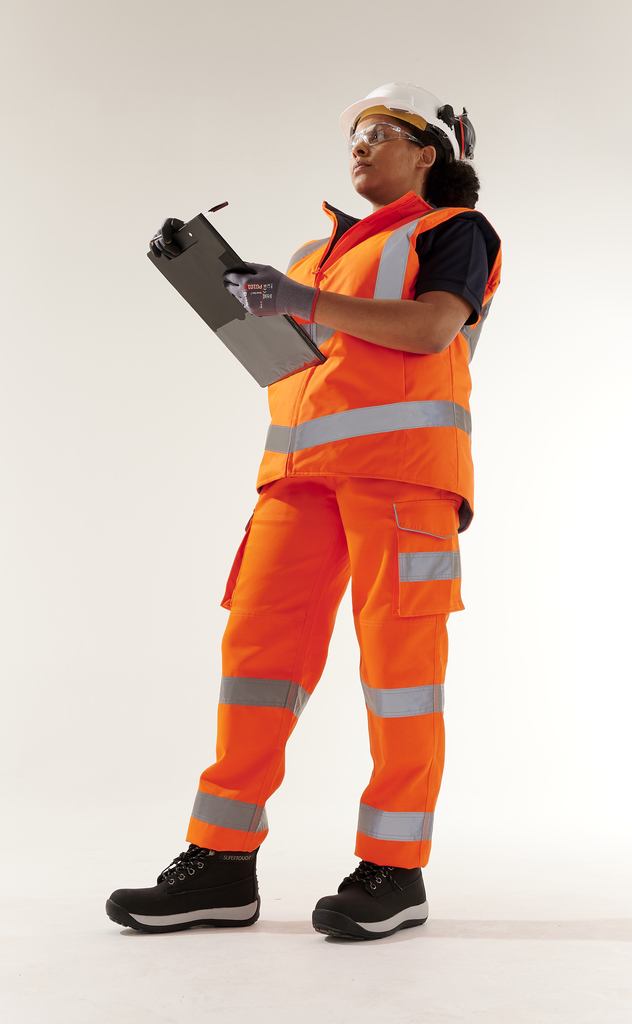
Kelly Rose
Editor

Kelly Rose
Editor
The primary role of safety and workwear is simple – effective protection of the end user. While the construction industry works hard to address legacy gender disparities in the workforce, the male orientation of PPE remains a daily reminder of the work left to do. Here, Sangeeta Aeri covers the issues surrounding inclusive safety workwear.
THE LAST decade has seen positive strides in the number of women entering the workforce across core industrial sectors such as construction, highways and rail. The benefits of a more diverse workforce on company culture and employee empowerment are well documented. Importantly, the pace of change shows no sign of slowing down, with a recent Randstad report showing that 23% of women working in construction have joined in the last two years1 alone. However, it’s important that employers recognise that while progress is being made, there remains a lot more work to be done. Especially with the very same report highlighting that 89% of women have experienced some form of perceived gender discrimination while working in the industry.
A ‘day-to-day’ area where the gender gap has tended to manifest is safety and workwear, especially when out on site. It is not uncommon for women working or visiting a site to have to make do with whatever workwear was available, the majority of which is typically designed and manufactured in male size.
This presents several challenges, especially from a site safety and user comfort point of view. While there is no such thing as an average female body type, there is undoubtedly a difference when it comes to waist ratio, limb length and chest size versus male counterparts.
Put simply, there is no guarantee that safety workwear designed to provide sufficient protection and comfort to male employees will offer comparable levels for women. For example, ill-fitting clothing represents a real safety risk, either through trips or falls, or getting caught in machinery.
One of the issues which has perpetuated the ‘gender PPE gap’ has been the simple lack of safety workwear designed specifically for the female workforce. While in the past there was, a lower demand for a more diverse offering, the fact that the number of women joining the major infrastructure industries is growing should only serve to encourage more workwear and PPE manufacturers to broaden the inclusivity of their offering.
While manufacturers, such as ourselves, have an obligation to drive this area of the market forward by designing and bringing to market a broader portfolio of products, it also requires Health & Safety and Operations managers to engage with the movement too.
Indeed, with many major infrastructure tenders now requiring contractors and suppliers to demonstrate their ESG credentials, it is important to remember that equality and diversity is a major pillar of ‘governance’ in ESG. Likewise, increasing the gender diversity within an organisation is only one piece of the puzzle and women should not only be more present, but more empowered.
Afterall, protective workwear is not only an essential component of workplace safety, but also for employee wellbeing. Proper PPE designed for the female body can facilitate greater user comfort while also helping female colleagues to feel more included. Whether you’re working on site all day, or just visiting as part of a planned visit, you naturally feel more confident if you’re able to wear safety or workwear that has been tailored to your body – regardless of your gender.
The fact that so many female stakeholders, myself included, have had to wear protective clothing designed for our male counterparts reaffirms that there remains a lot of work to be done. However, with the construction industry in the grips of a sustained and well documented skills crisis, and facing a shortfall of 225,000 jobs2, there is also a wealth of opportunity. Indeed, taking a holistic to approach to improving inclusivity at every level, including safety and workwear, can really help companies both retain and attract more women into the industry.
Making ladieswear more accessible
While female workwear and PPE is not a new concept, many existing lines have concentrated at the premium end of the market. The absence of compliant, comfortable and accessible workwear is another reason for the lack of mass take-up, and it is a gap in the market that we have focused our own attentions on in recent years.
As a result, this year will see Supertouch launch its first ever range of ladies’ workwear suitable for a wide variety of industrial sectors.
The products within the range have been tailored to female body types with a view to maximising comfort and optimising ergonomics. In order to offer flexibility around sizing, each garment will be available in 15 different sizes, and where appropriate, will incorporate adjustable cuffs and hems to enable the wearer to truly tailor each item of clothing to their personal fit. The hi-vis elements of the range feature strategically positioned and stretchable reflective tape to ensure compliance with EN ISO 20471, while in addition to structured side panelling allows for greater user comfort.
Importantly, each item in the range has been named after the daughter of a Supertouch employee involved in the development process. By doing this, we hope to inspire future generations of women to enter the industry while highlighting the need for female input into design processes.
Breaking down barriers
Ultimately, while landmark initiatives such as Women in Construction and Women in Engineering are playing an important role in rebalancing the gender split across major infrastructure, generational change requires buy-in from stakeholders across the industry.
While to some it may seem small, the reality is the gender PPE gap is a tangible, daily reminder of the work that needs to be done to improve equality throughout industry. However, closing it is also one of the easiest steps to take.
References
1 www.randstad.co.uk/s3fs-media/uk/public/2022-08/Randstad_Gender_Equality_in_the_workplace_2022.pdf
2 www.citb.co.uk/about-citb/construction-industry-research-reports/construction-skills-network-csn/
Sangeeta Aeri is technical manager at Supertouch. For more information, please visit www.supertouch.com.



Unit 3 Rabone Park
SMETHWICK
B66 2NN
UNITED KINGDOM
03451 30 9922